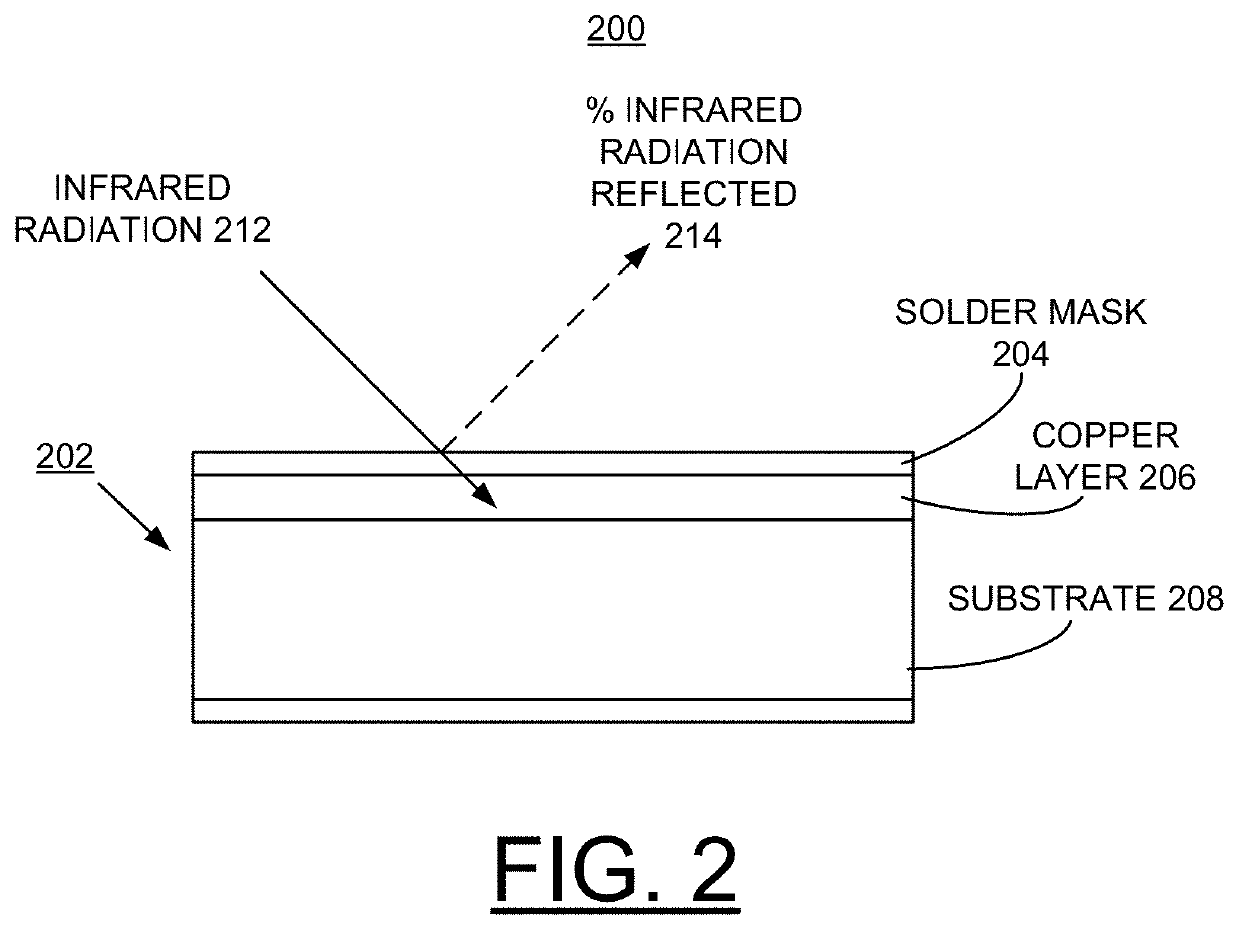Implementing IR reflective mask to minimize CTE mismatch between laminate and PTH copper
a technology of pth copper and reflective mask, applied in the field of data processing, can solve the problems of fatigue failure mode, large strain in the embedded copper structure, thermal fatigue of pth barrels, etc., and achieve the effect of increasing pth reliability
- Summary
- Abstract
- Description
- Claims
- Application Information
AI Technical Summary
Benefits of technology
Problems solved by technology
Method used
Image
Examples
example fabrication
[0030 of the IR mask 406 is provided at: (http: / / www.cnf.cornell.edu / cnf_process_mask_equipment.html), by Cornell Nanoscale Science and Technology Facility, as follows:
[0031]Optical lithography requires the fabrication of a mask. Generally, photomasks consist of a piece of glass of some type, coated with a film in which the pattern is formed. A layer of sputtered Cr about 100 nm thick coats the glass plate. Resist is then spun on the plate, and the exposure is made. After development, the Cr is removed from the unprotected areas with an acid etch, and an image of the pattern is left in the Cr. The exposure can be made with either an optical or an electron beam lithography tool. Once the pattern is formed, a second, IR reflective coating is applied to those regions of the glass master that do not define the PTHs. Various IR reflective coatings can be used, such as found at: (https: / / www.pcimag.com / articles / 83468-introduction-to-ir-reflective-pigments).
[0032]For example, as described ...
PUM
| Property | Measurement | Unit |
|---|---|---|
| temperatures | aaaaa | aaaaa |
| solar reflectance | aaaaa | aaaaa |
| thick | aaaaa | aaaaa |
Abstract
Description
Claims
Application Information
 Login to View More
Login to View More - R&D
- Intellectual Property
- Life Sciences
- Materials
- Tech Scout
- Unparalleled Data Quality
- Higher Quality Content
- 60% Fewer Hallucinations
Browse by: Latest US Patents, China's latest patents, Technical Efficacy Thesaurus, Application Domain, Technology Topic, Popular Technical Reports.
© 2025 PatSnap. All rights reserved.Legal|Privacy policy|Modern Slavery Act Transparency Statement|Sitemap|About US| Contact US: help@patsnap.com



